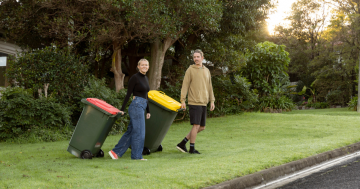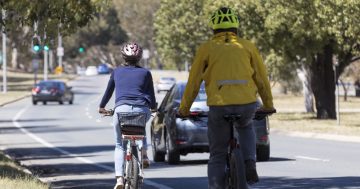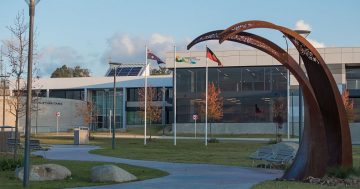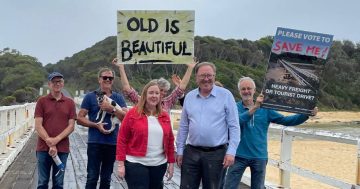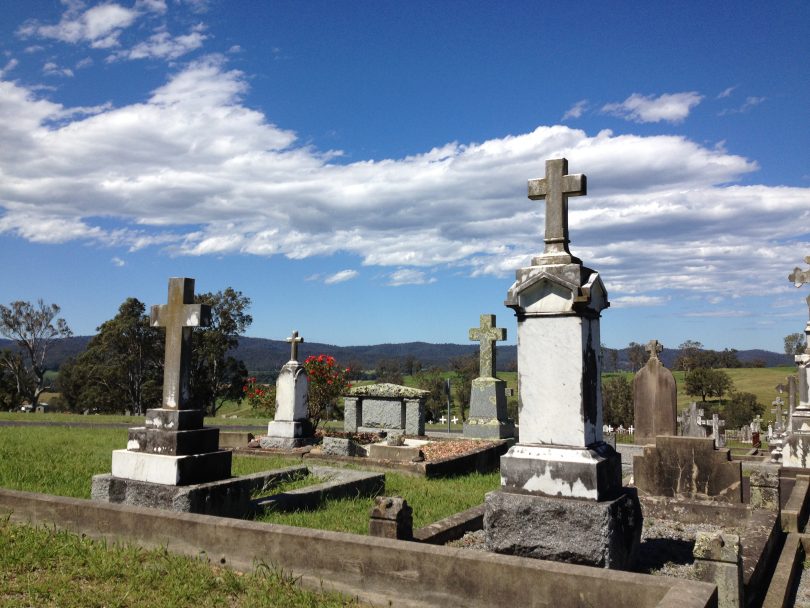
Council has contracted Kategic Solutions to assist in establishing where cemeteries need review. Photos: Elka Wood.
As well as general maintenance requirements and the age-old question of whether there needs to be public toilets at cemeteries, Bega Valley Shire Council’s cemetery review involves checking that local burial plots are actually ‘occupied.’
Grave-checking, as well as attempting to solve the mysteries of unmarked graves, is part of council’s ambitious plan to map each cemetery and digitalise the maps so that finding loved ones is easier, says Simon Schweitzer, principal consultant at Kategic Solutions, an independent company contracted by Council to consult with the public about future cemetery maintenance.
“There are eight to 10 graves in Eden we thought were full, but it turns out they’re not,” Schweitzer says.
“This is good news, as Eden is one of the three biggest cemeteries in the Bega Valley, along with Bega and Pambula and it’s the one that will likely run out of land the fastest.”
Gaining a few more plots will help but Schweitzer says that “space might be an issue in Eden in the next five years.”

Bega cemetery, pictured here, has some wiggle room in terms of future expansion but other cemeteries in the Bega Valley may require more land to be acquired.
Plots are checked most often by scraping the top layer of soil from a grave and analysing it to see if the soil has been disturbed, though there are a number of more technology-heavy methods available now.
Pambula’s Gordon Radford was at a recent community meeting and was a gravedigger in Pambula for over 20 years. He says he battled six-foot tree ferns and plenty of black snakes to make space for graves in the early 1950s.
Radford says that any gravedigger worth his salt would know straight away if there was “someone in there” after taking a soil scrape.
Shirley Bazley of the Bega Valley Historical Society has raised concerns about council caring for a few sets of scattered graves which were early attempts at creating local cemeteries.
“There are four graves on the Pambula flat that need to have the grass kept down so we don’t lose them,” Bazley says. “I wanted to make sure council knew it was their job to do that.”

Community consultations are over but Bega Valley Shire Council’s community survey is open online until the 3rd March.
Issues such as the one Bazley raises linger after the care of Bega Valley cemeteries was transferred from local volunteer organisations to Council in 2009.
In a press release, Council says this is a key reason for conducting the community consultations and survey.
“We know there is still a lot of knowledge and information out there in the community about cemeteries,” Council says.
The strategic plan will take into consideration cultural and religious issues around burial.
“Cultural practices around burial are always changing, we’re tending toward cremation and scattering ashes with a plaque rather than a physical grave,” notes Bezley, while Schweitzer adds that Bega Cemetery just had its first Islamic burial.
Radford remembers when stillborn babies were buried all together on the edge of the cemetery with no grave.
“I’d collect a little white box from the hospital. Never sent the family a bill, figured they had enough grief in their lives,” Radford says.
Community consultations are over but Bega Valley Shire Council’s online survey is open until March 3. Hard copies of the survey are available at Shire libraries and Council’s Zingel Place offices in Bega.







